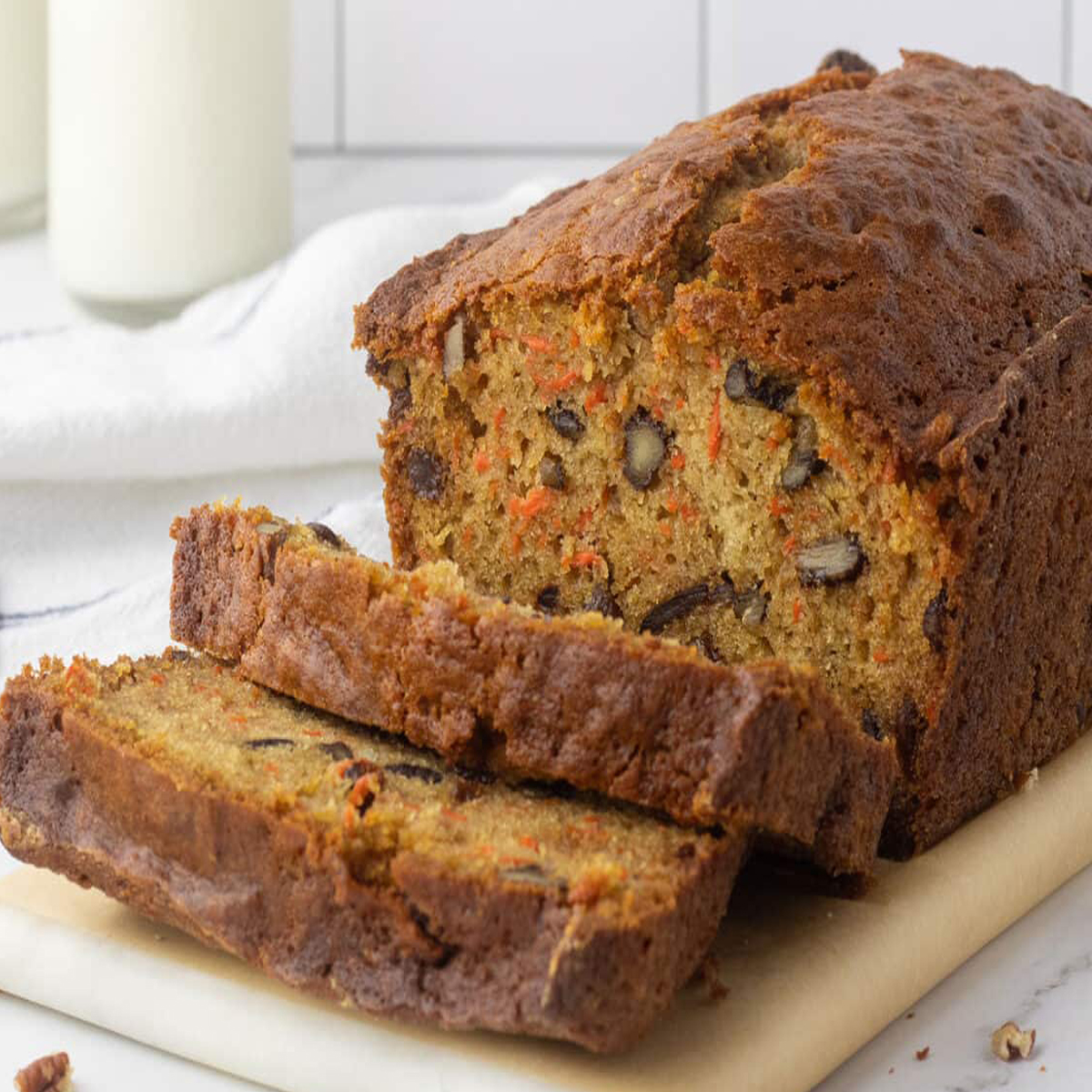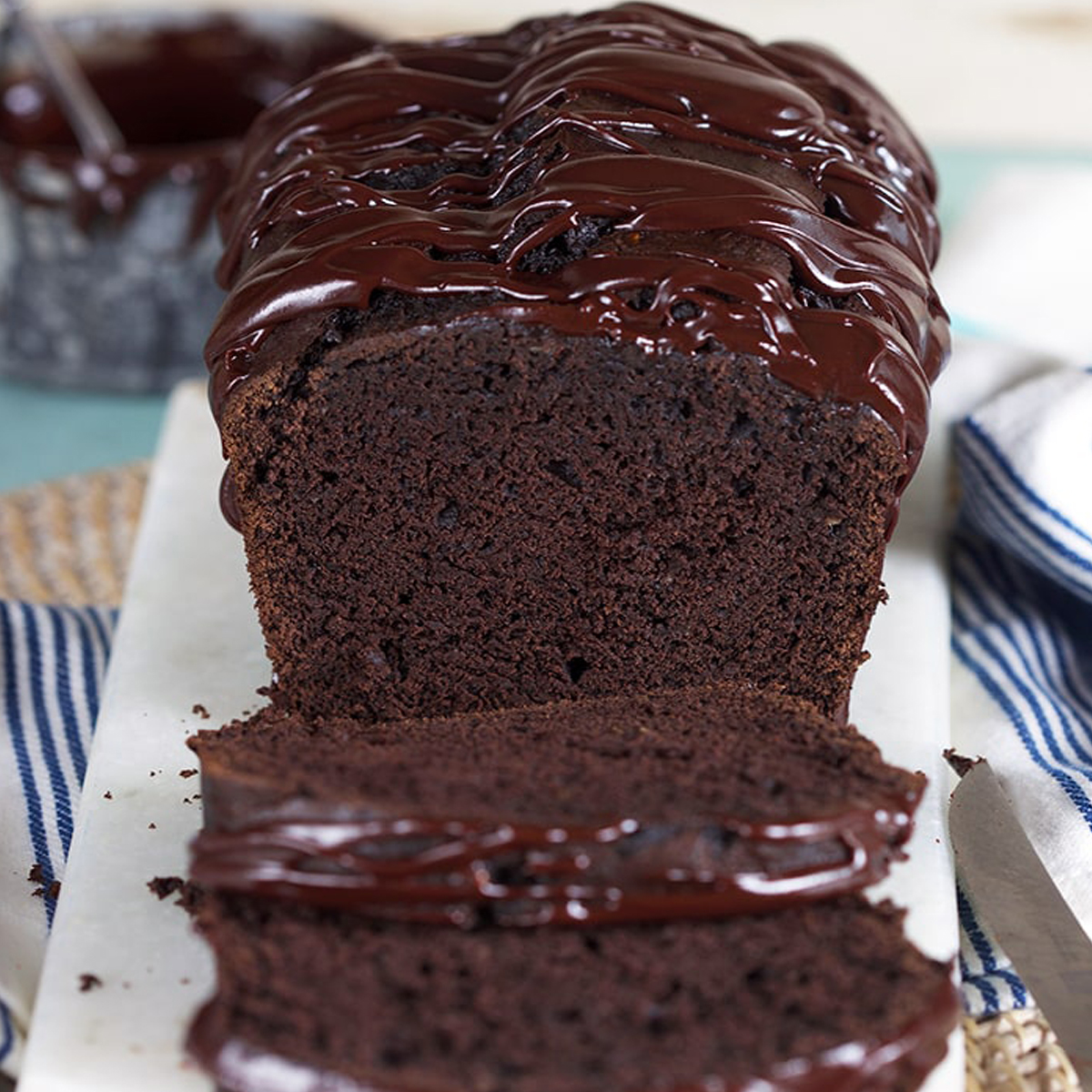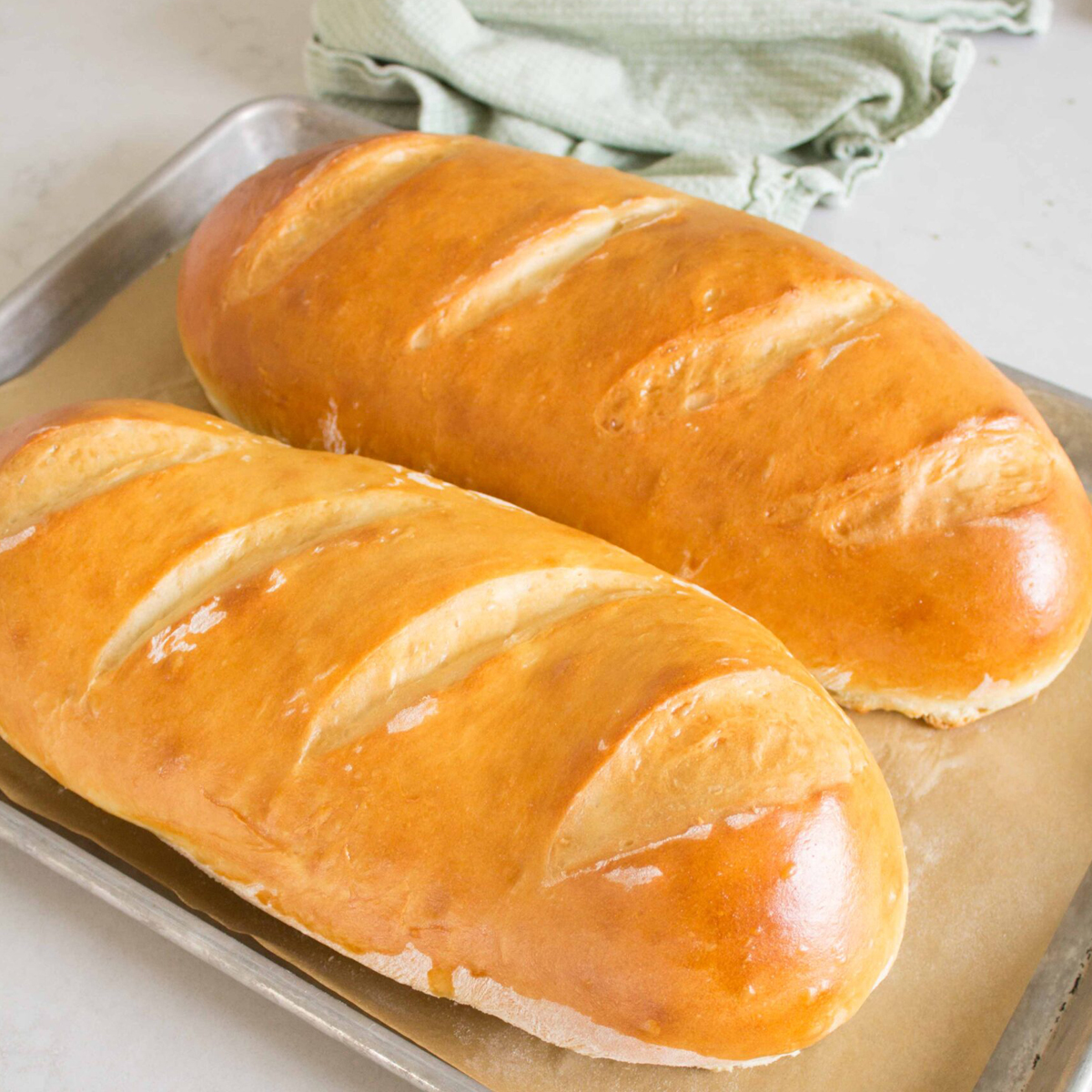Introducing the delightful world of Italian Bread – a culinary masterpiece that embodies the essence of Italy’s rich cultural heritage and artisanal traditions. Renowned for its simple yet extraordinary flavors, Italian bread has long been a staple in Italian households and eateries across the globe. With a crust that crackles invitingly and a tender, airy interior, this bread captivates the senses and offers a unique gastronomic experience like no other. Whether dipped in olive oil, used as a vessel for hearty sandwiches, or enjoyed alongside a traditional Italian meal, Italian bread is a timeless symbol of Italian cuisine, celebrated for its craftsmanship and its ability to bring people together around the table to savor the warmth of good food and great company. Join us on a journey to discover the captivating world of Italian Bread, where every bite reflects the passion and dedication of Italian bakers and their profound respect for the art of bread-making.

What Is Italian Bread?
Italian bread refers to a variety of bread types and styles that originate from Italy, each with its own unique characteristics and regional variations. While there is no single “Italian bread” recipe, some common features unite most Italian bread varieties. Generally, Italian bread is known for its rustic appearance, crisp crust, and soft, chewy interior.
One of the most iconic types of Italian bread is “Ciabatta,” which translates to “slipper” in Italian due to its elongated, flat shape. Ciabatta has a light, open crumb structure and a slightly chewy texture, making it perfect for sandwiches and dipping in olive oil or sauces.
Another well-known Italian bread is “Pane di Casa,” which means “home bread.” Pane di Casa is often characterized by a thicker crust and a hearty, moist crumb that provides a satisfying and wholesome eating experience.
Additionally, “Focaccia” is a famous Italian flatbread that is seasoned with olive oil, salt, and various toppings like herbs, vegetables, or cheese. It is often enjoyed as an appetizer or alongside a meal.
Various regions in Italy boast their own traditional breads, such as Tuscan “Pane Toscano,” Roman “Pizza Bianca,” and Sicilian “Semolina Bread.”
Italian bread-making is deeply rooted in centuries of tradition and artisanal techniques, often using simple ingredients like flour, water, yeast, and salt. The slow fermentation process and attention to details in kneading and shaping contribute to the distinct taste and texture of Italian bread.
Italian bread plays an integral role in Italian cuisine and is commonly served as an accompaniment to meals, used as a base for bruschetta, panini, or crostini, and enjoyed in various culinary applications.
In summary, “Italian bread” refers to a diverse array of bread types, each cherished for its unique characteristics, cultural significance, and contribution to the delectable world of Italian gastronomy.
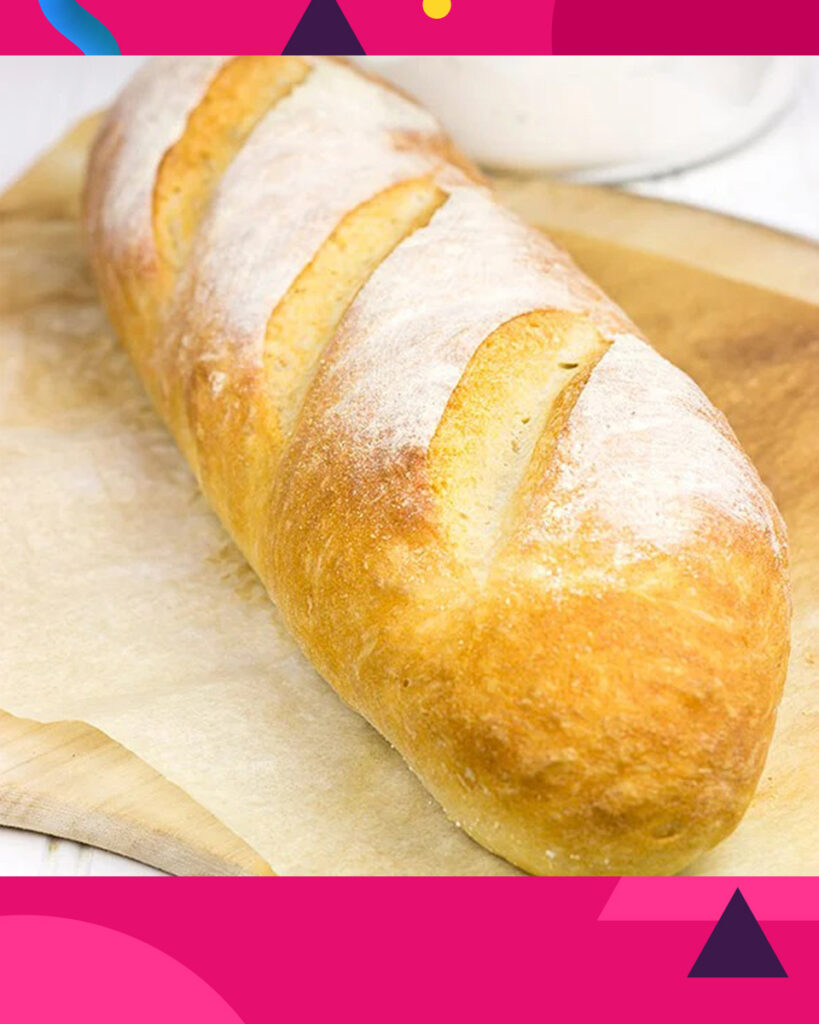
Why You Will Love Italian Bread Recipe?
You will love the Italian Bread recipe for several compelling reasons that will elevate your baking and culinary experience:
- Simplicity: The Italian Bread recipe is surprisingly straightforward, using only a few basic ingredients – flour, water, yeast, and salt. The simplicity allows the true flavors of the bread to shine, making it a pleasure to savor.
- Rustic Charm: Italian bread’s rustic appearance with its beautifully crackled crust and irregular shape exudes a homely charm that adds an authentic touch to any meal or gathering.
- Aroma and Flavor: As the Italian bread bakes, your kitchen will be filled with an irresistible aroma that will heighten your anticipation. Once you taste it, you’ll be captivated by the delightful combination of a crispy crust and a tender, airy crumb that delivers a burst of flavor with each bite.
- Versatility: This bread is incredibly versatile. You can enjoy it fresh and warm on its own, dip it in olive oil and balsamic vinegar, or use it as a base for bruschetta, sandwiches, panini, and more. Its ability to complement various dishes makes it a must-have in your culinary repertoire.
- Artisanal Experience: Baking Italian bread from scratch gives you a sense of accomplishment and allows you to connect with centuries-old artisanal traditions. The hands-on process of kneading and shaping the dough brings a meditative and rewarding aspect to the baking journey.
- Sharing and Bonding: Sharing freshly baked Italian bread with family and friends fosters a sense of togetherness and joy. It creates a warm atmosphere that encourages conversation and shared moments, making it the perfect addition to any mealtime.
- Cultural Appreciation: Embracing the Italian Bread recipe allows you to connect with the rich cultural heritage of Italy and appreciate the deep-rooted significance of bread in Italian cuisine and traditions.
- Customization: While the traditional recipe is a delightful experience on its own, you can also experiment with variations by adding herbs, seeds, or other ingredients to suit your taste preferences, making the bread truly your own creation.
- Health Benefits: Homemade Italian bread is free from artificial additives and preservatives, making it a healthier choice compared to many commercial bread options. Additionally, the slower fermentation process can enhance digestibility and nutrient absorption.
- Endless Enjoyment: Once you’ve mastered the Italian Bread recipe, you’ll find yourself coming back to it time and again. It’s a timeless classic that promises to bring joy to your taste buds and create fond memories with every batch.
In summary, the Italian Bread recipe offers simplicity, rustic charm, and an explosion of flavor, making it a delightful addition to your culinary endeavors. Baking this bread allows you to experience the joy of creating something with your hands while savoring the cultural richness of Italy, all while sharing delectable moments with your loved ones.

Ingredients For Italian Bread
- 500g (4 cups) bread flour or all-purpose flour
- 10g (2 tsp) active dry yeast or instant yeast
- 10g (2 tsp) salt
- 350ml (1 1/2 cups) warm water (around 110°F/43°C)
- Extra flour for dusting while kneading
- Olive oil for greasing the bowl and baking sheet (optional)
- Cornmeal or semolina flour for dusting the baking sheet (optional)
Note: The quantities mentioned above are for a basic Italian bread recipe. You can adjust the quantities based on the size of the loaf you want to make or any variations you’d like to try.
How To Make Italian Bread
- Activate the Yeast:
- In a small bowl, combine the warm water and yeast.
- Let it sit for about 5-10 minutes until it becomes frothy and bubbles form on the surface. This indicates that the yeast is active and ready to use.
- Mix the Dough:
- In a large mixing bowl, combine the flour and salt.
- Make a well in the center and pour in the activated yeast mixture.
- Mix the ingredients together with a wooden spoon or your hands until a dough forms.
- Knead the Dough:
- Transfer the dough onto a floured surface and knead it for about 8-10 minutes until it becomes smooth, elastic, and no longer sticky.
- You can add a little extra flour as needed during the kneading process.
- First Rise:
- Shape the dough into a ball and place it in a lightly greased bowl.
- Cover the bowl with a damp kitchen towel or plastic wrap.
- Allow the dough to rise in a warm, draft-free place for about 1 to 1.5 hours, or until it doubles in size.
- Preheat the Oven:
- Preheat your oven to 450°F (230°C) during the last 15-20 minutes of the rising time.
- If you have a baking stone, place it in the oven while preheating. Alternatively, you can use a baking sheet.
- Shape the Loaf:
- Gently punch down the dough to release excess air.
- Turn it out onto a floured surface and shape it into an elongated loaf or a round boule, depending on your preference.
- You can also divide the dough into smaller portions to make individual rolls.
- Second Rise:
- Place the shaped dough onto a baking sheet lightly dusted with cornmeal or semolina flour.
- Cover it with a damp cloth and let it rise again for about 30 minutes to 1 hour, or until it visibly puffs up.
- Slash the Dough (Optional):
- If desired, make shallow slashes on the surface of the dough using a sharp knife or a razor blade.
- This helps control the expansion of the bread during baking.
- Bake the Bread:
- If you are using a baking stone, carefully transfer the shaped dough onto the hot stone. Otherwise, leave it on the baking sheet.
- Bake the Italian bread for about 20-25 minutes or until it turns golden brown and sounds hollow when tapped on the bottom.
- Cool and Enjoy:
- Remove the bread from the oven and let it cool on a wire rack for at least 15-20 minutes before slicing and serving.
- The bread tastes best when it’s still slightly warm and it pairs wonderfully with olive oil, cheeses, or your favorite Italian dishes.
Now you have a detailed formula to make delicious homemade Italian Bread. Enjoy the process of baking and the delightful taste of this classic Italian treat!
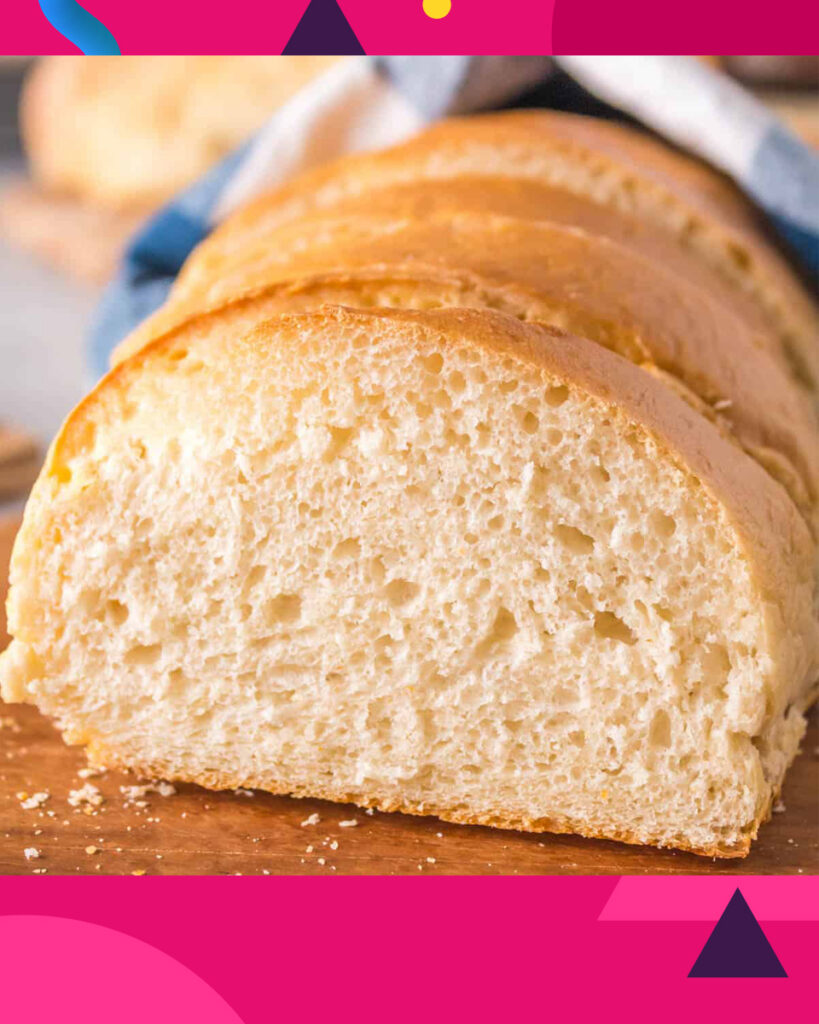
How To Serve Italian Bread
Serving Italian bread is a delightful experience that complements various meals and occasions. Here are some popular ways to serve Italian bread:
- Freshly Baked Bread with Olive Oil and Balsamic Vinegar:
Serve warm slices of Italian bread with a dish of extra-virgin olive oil and aged balsamic vinegar on the side. Guests can dip the bread into the oil and vinegar, savoring the rich flavors of the Mediterranean. - As a Side with Meals:
Italian bread makes an excellent side dish with a wide range of meals, such as pasta dishes, soups, stews, and roasted meats. Its crusty exterior and soft interior perfectly complement the main course. - Bruschetta:
Slice Italian bread and lightly toast or grill the slices. Top them with a mixture of fresh tomatoes, garlic, basil, and olive oil for a classic bruschetta appetizer. - Panini and Sandwiches:
Use Italian bread to create delicious panini or sandwiches. Fill it with your favorite cold cuts, cheeses, vegetables, and spreads for a satisfying and portable meal. - Crostini:
Thinly slice Italian bread and toast the slices until crisp. Top them with various spreads, such as olive tapenade, roasted red pepper spread, or ricotta cheese mixed with herbs. - Accompaniment to Antipasti Platters:
Include slices of Italian bread on an antipasti platter alongside cured meats, cheeses, olives, and marinated vegetables. The bread serves as a perfect vessel for enjoying the flavors of the other appetizers. - Cheese and Bread Platter:
Offer a selection of Italian cheeses, such as mozzarella, pecorino, and gorgonzola, alongside Italian bread. Let guests create their own delightful cheese and bread combinations. - Crostinis with Dips and Spreads:
Cut Italian bread into smaller crostini-sized pieces and serve with various dips and spreads, such as hummus, artichoke dip, or pesto. - Garlic Bread:
Infuse Italian bread with the flavors of garlic by brushing slices with garlic-infused olive oil and toasting them until golden brown. - Sop up Sauces and Juices:
Italian bread is perfect for sopping up sauces and juices from saucy dishes like pasta with marinara sauce or hearty stews.
Remember, the key to serving Italian bread is to keep it fresh and warm whenever possible. Whether you’re enjoying it on its own with a simple drizzle of olive oil or using it as a canvas for creative toppings, Italian bread’s versatility ensures it can be a delightful addition to any meal or gathering.

How To Store Italian Bread
Storing Italian bread properly will help preserve its freshness and flavor for a longer period. Here are some tips on how to store Italian bread:
- Room Temperature:
If you plan to consume the Italian bread within a day or two, you can store it at room temperature. Place the bread in a paper bag or wrap it loosely in a clean kitchen towel. Avoid using plastic bags, as they can trap moisture and make the crust soggy. - Bread Box:
A bread box is an excellent option for storing Italian bread at room temperature. It provides a breathable environment that helps maintain the bread’s crust while preventing it from drying out too quickly. - Freezing:
If you have leftover Italian bread or want to store it for an extended period, freezing is the best option. To freeze the bread, follow these steps:
- Allow the bread to cool completely.
- Wrap the bread tightly in plastic wrap or aluminum foil to prevent freezer burn and keep out excess moisture.
- Place the wrapped bread in a resealable plastic bag to provide an extra layer of protection.
- Label the bag with the date to keep track of how long it has been in the freezer.
- Slicing Before Freezing (Optional):
If you prefer to have individual slices readily available, you can slice the Italian bread before freezing. Simply separate the slices with parchment paper to prevent them from sticking together. - Thawing Frozen Bread:
When you’re ready to enjoy the frozen Italian bread, remove it from the freezer and let it thaw at room temperature. Avoid microwaving or heating it in the oven immediately, as this can cause the bread to become too soft or dry. Once thawed, you can reheat it in the oven at a low temperature to recrisp the crust, if desired. - Reheating:
To reheat Italian bread that has gone stale or lost its crispness, sprinkle it lightly with water and place it in a preheated oven at 350°F (175°C) for about 5-10 minutes. The steam from the water will help revive the crust and make the bread taste fresher. - Avoid Refrigeration:
It’s best to avoid storing Italian bread in the refrigerator as it can cause the bread to become stale and lose its texture and flavor faster.
By following these storage tips, you can ensure that your Italian bread stays fresh and delicious, allowing you to enjoy it over an extended period without losing its authentic taste and texture.
You might also like these recipes:
Tips And Tricks For Italian Bread
Here are some tips and tricks to help you achieve the best results when making Italian bread:
- Use High-Quality Flour: Choose a high-protein bread flour or all-purpose flour for the best texture and structure in your Italian bread. High-protein flour creates a stronger gluten network, resulting in a chewier and airy crumb.
- Measure Ingredients Accurately: For consistent results, use a kitchen scale to measure the ingredients accurately, especially the flour. Slight variations in flour measurements can significantly impact the dough’s consistency.
- Activate the Yeast Properly: Ensure the water used to activate the yeast is at the right temperature (around 110°F/43°C). Too hot water can kill the yeast, while water that’s too cold won’t activate it adequately.
- Knead the Dough Thoroughly: Proper kneading is crucial to develop the gluten and create a well-structured crumb. Knead the dough until it becomes smooth, elastic, and springs back when lightly pressed with your fingers.
- First Rise Time and Temperature: Let the dough rise in a warm, draft-free place for the first rise. A temperature between 75°F to 85°F (24°C to 29°C) is ideal for yeast fermentation.
- Second Rise Timing: The second rise allows the dough to develop more flavor and texture. Do not rush this step, as a longer second rise can lead to a tastier bread. However, avoid over-proofing, as it may cause the dough to deflate during baking.
- Preheat Your Oven and Baking Stone: Ensure your oven and baking stone (if using) are preheated adequately to achieve a crispy crust. Preheating for at least 30 minutes is recommended.
- Steam in the Oven: Create steam in the oven during the first few minutes of baking to promote crust formation. You can place a shallow pan with water at the bottom of the oven or spray water onto the oven walls.
- Score the Dough: Make shallow cuts on the surface of the dough before baking. This allows the bread to expand properly during baking and gives it an attractive appearance.
- Avoid Overbaking: Keep a close eye on the bread towards the end of the baking time to prevent overbaking. Italian bread is best when it has a golden-brown crust and a soft, airy interior.
- Cooling and Storing: Let the bread cool completely on a wire rack before slicing or storing. Storing bread in a paper bag or bread box will help retain its crusty exterior without making it too dry.
- Experiment with Additions: While the basic Italian bread recipe is delicious on its own, you can get creative and add herbs, olives, roasted garlic, or sun-dried tomatoes to the dough for unique flavor variations.
By incorporating these tips and tricks into your Italian bread-making process, you’ll be well on your way to creating delectable, authentic, and mouthwatering loaves that will impress your family and guests alike.

FAQs And Troubleshooting About Italian Bread:
1. Why is my Italian bread not rising?
- Several factors can hinder proper rising. Ensure that your yeast is fresh and active, and the water temperature is within the recommended range for yeast activation (around 110°F/43°C). Additionally, check if your dough is placed in a warm, draft-free area during the rising process, as colder environments can impede fermentation.
2. How do I know when the bread is fully baked?
- A fully baked Italian bread will have a golden-brown crust and will sound hollow when tapped on the bottom. You can also use an instant-read thermometer inserted into the center of the loaf – the internal temperature should read around 200°F (93°C).
3. My bread is too dense. What could be the reason?
- Bread density may result from inadequate gluten development during kneading or using low-protein flour. Ensure that you knead the dough thoroughly to create a strong gluten network. Also, double-check the type of flour you are using; a higher protein content is essential for a light and airy crumb.
4. How can I achieve a crisp crust?
- To achieve a crisp crust, create steam in the oven during the initial baking stage. You can do this by placing a shallow pan with water at the bottom of the oven or spraying water onto the oven walls. Additionally, preheating your baking stone (if using) helps create a crispy bottom crust.
5. Can I freeze the dough for future use?
- Yes, you can freeze Italian bread dough for future use. After the first rise, shape the dough into a ball, wrap it tightly in plastic wrap, and place it in a resealable plastic bag. When ready to use, thaw the dough in the refrigerator overnight and allow it to come to room temperature before proceeding with the second rise and baking.
6. Can I substitute instant yeast for active dry yeast?
- Yes, you can substitute instant yeast for active dry yeast in the same quantity. However, you may skip the step of activating the yeast in warm water when using instant yeast. Simply mix the instant yeast directly with the dry ingredients.
7. How long does Italian bread stay fresh?
- Italian bread is best enjoyed on the day it’s baked. If storing, keep it at room temperature in a paper bag or bread box for up to 2 days. To extend freshness, freeze the bread for up to 2-3 months.
8. How do I reheat Italian bread?
- To reheat Italian bread, sprinkle it lightly with water and place it in a preheated oven at 350°F (175°C) for about 5-10 minutes. The steam from the water will help recrisp the crust.
9. Can I use a bread machine to make Italian bread?
- Yes, you can adapt the Italian bread recipe for a bread machine by following the manufacturer’s instructions for mixing and kneading. However, you may need to transfer the dough to the oven for baking, as bread machines may not provide the same crusty results as traditional oven baking.
10. My bread turns out too salty. How can I reduce the saltiness?
- To reduce the saltiness, simply decrease the amount of salt used in the recipe. You can try reducing it by half or adjusting to taste. Keep in mind that salt also plays a crucial role in yeast fermentation and gluten development, so avoid eliminating it entirely.
By addressing these frequently asked questions and troubleshooting tips, you’ll enhance your Italian bread-making skills and enjoy consistently delightful loaves with each batch.
Nutritional Information
I can provide you with a general approximation of the nutritional values for a typical serving size of Italian bread (a 1-ounce 28g slice):
Calories: 80-90 kcal, Total Fat: 0.5-1g, Saturated Fat: 0g, Trans Fat: 0g, Cholesterol: 0mg, Sodium: 150-200mg, Total Carbohydrates: 16-18g, Dietary Fiber: 1g, Sugars: 0-1g, Protein: 2-3g
Please note that these values are approximate and can vary based on factors such as the recipe’s specific ingredients, portion size, and baking method. Additionally, the nutritional values can differ depending on whether the Italian bread is enriched with additional ingredients like seeds, herbs, or cheese.
Italian bread is generally considered a source of carbohydrates, with a small amount of protein and minimal fat content. It’s important to enjoy Italian bread in moderation as part of a balanced diet, complementing it with a variety of other nutritious foods. If you have specific dietary requirements or concerns, it’s always a good idea to check the nutrition label on the packaging or consult a registered dietitian for personalized advice.


